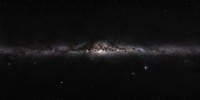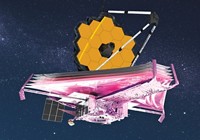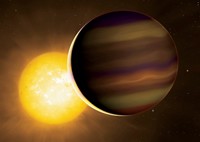Advertisement
Grab your lab coat. Let's get started
Welcome!
Welcome!
Create an account below to get 6 C&EN articles per month, receive newsletters and more - all free.
It seems this is your first time logging in online. Please enter the following information to continue.
As an ACS member you automatically get access to this site. All we need is few more details to create your reading experience.
Not you? Sign in with a different account.
Not you? Sign in with a different account.
ERROR 1
ERROR 1
ERROR 2
ERROR 2
ERROR 2
ERROR 2
ERROR 2
Password and Confirm password must match.
If you have an ACS member number, please enter it here so we can link this account to your membership. (optional)
ERROR 2
ACS values your privacy. By submitting your information, you are gaining access to C&EN and subscribing to our weekly newsletter. We use the information you provide to make your reading experience better, and we will never sell your data to third party members.
Astrochemistry
Mysterious galactic radiation pinned on nanodiamonds
Spinning hydrogen-coated clusters of carbon atoms may be source of anomalous microwave emission spotted around our galaxy
by Sam Lemonick
June 14, 2018
| A version of this story appeared in
Volume 96, Issue 25

When electrons and protons formed the first hydrogen atoms some 379,000 years after the Big Bang, they freed up photons to travel the universe. We still see them today as microwave emissions. Astronomers mapping this cosmic microwave background in the 1990s to better understand the universe’s genesis noticed other signals coming from our own galaxy that they couldn’t explain. This anomalous microwave emission (AME) has long been ascribed to polycyclic aromatic hydrocarbons (PAHs). A new study suggests the real source may be nanoscopic diamonds (Nature 2018, DOI: 10.1038/s41550-018-0495-z).
Jane Greaves of Cardiff University was studying dust disks around stars when she spotted AME signals. The three stars the signals were coming from were the only ones in her sample where astronomers had observed signatures of hydrogenated nanodiamonds. These tetrahedral diamonds contain just a few hundred carbon atoms and are about a nanometer or less wide. Their origin isn’t known for certain, but Greaves says they likely form in high-pressure events like collisions or supernovae. Atomic hydrogen—abundant in interstellar space—forms a layer on their surface and collisions with other particles can give them a dipole moment. That, along with their propensity to spin, means they could emit microwave radiation.
Clive Dickinson of the University of Manchester says the results would be stronger if they were based on more observations. So astronomers need to collect more high-resolution observations to determine if diamonds produce AME elsewhere.
Greaves says one of her students is examining published spectra of nanodiamonds to see if the researchers can nail down which species occur around different stars. Whether they are the same or different will help astronomers to determine whether nanodiamonds—including the ones found in meteorites in our own solar system—are produced locally or come from common sources.





Join the conversation
Contact the reporter
Submit a Letter to the Editor for publication
Engage with us on Twitter